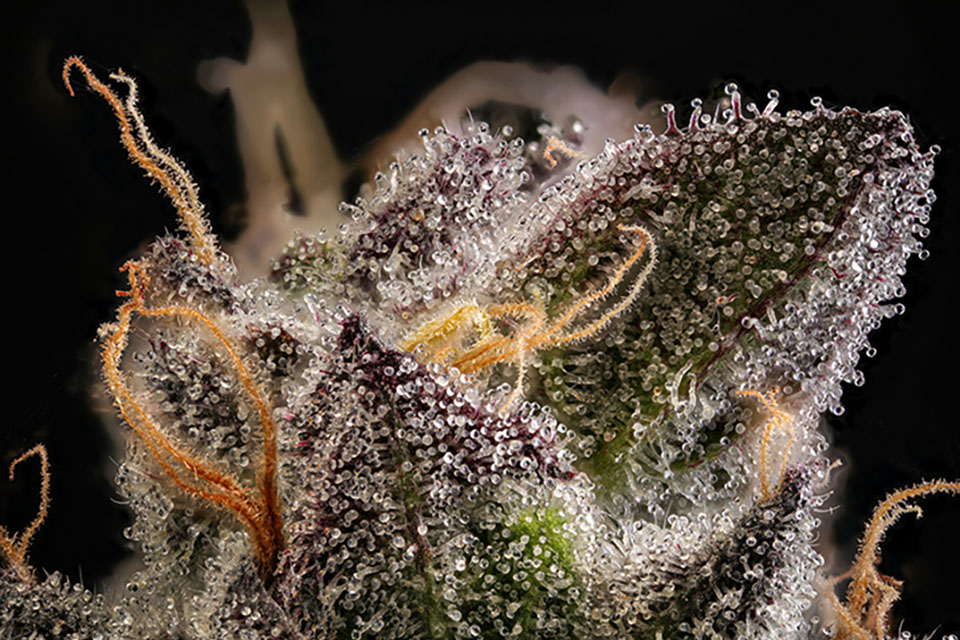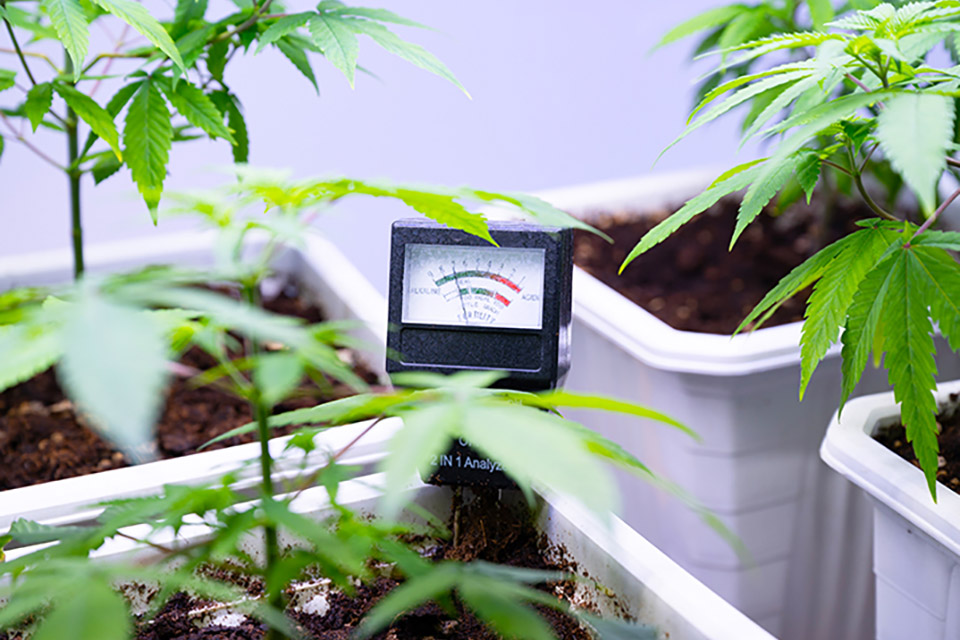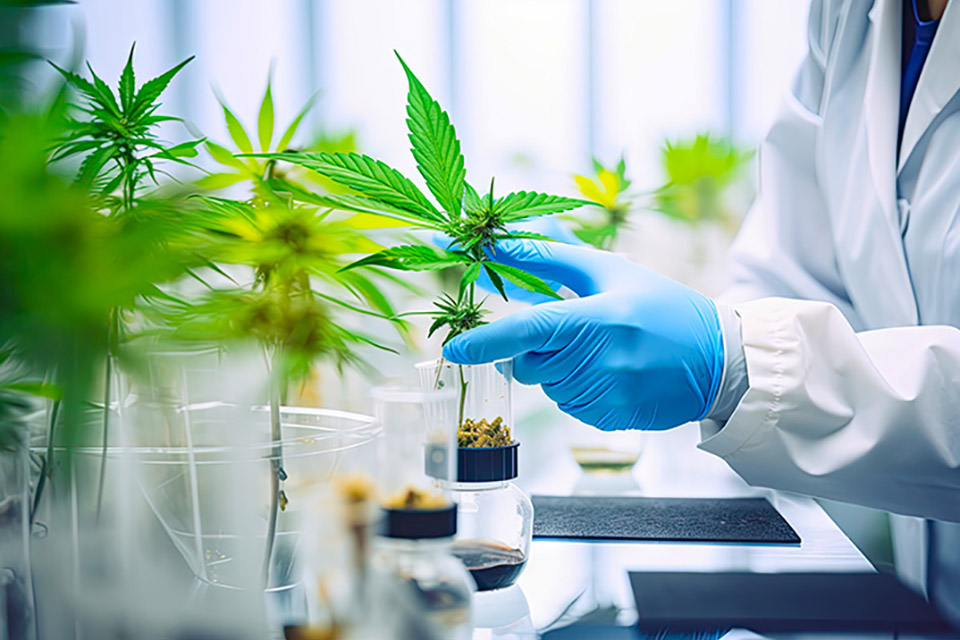
Whether you’re just starting the journey of home cannabis cultivation or are a seasoned grower, nutrient burn can stop you in your tracks. But it’s just a manageable part of the growing process. With the right knowledge and techniques, overcoming this challenge is possible. Today, we’re talking about effective strategies to prevent and treat nutrient burn. Using these methods, you can ensure your cannabis plants not only survive but thrive, leading to a bountiful harvest of quality buds.
What is Nutrient Burn?
Nutrient burn is a condition that affects cannabis plants when they are exposed to excessive levels of nutrients, particularly during their feeding. This overabundance can lead to a toxic buildup in the plant, primarily affecting the leaves. The most common nutrients that cause this issue are nitrogen, phosphorus, and potassium, which are important for plant growth but can be harmful in high doses.
Recognizing Nutrient Burn
Early detection of nutrient burn is important for the health of your cannabis plants. Here are the signs to watch out for:
- Tips of Leaves Turning Yellow or Brown: This is the most immediate and noticeable symptom. Initially, only the tips of the leaves will show discoloration, but this can quickly spread if the issue is not addressed.
- Leaves Becoming Crispy or Curling: As nutrient burn progresses, the affected leaves will begin to curl upwards or downwards and may feel brittle or crispy to the touch. This is a sign that the damage is intensifying.
- Dark, Lush Green Coloration: An overly dark green hue in the leaves can be an early sign of nitrogen excess, which is a precursor to nutrient burn.
- Stunted Growth: Excess nutrients can overwhelm the plant, leading to slowed or stunted growth. This is a less obvious symptom but important to note as part of the bigger picture.
- Leaf Fall: In severe cases, the plant may start to shed leaves as it struggles to cope with the nutrient overload.
- Burn Patches: Sometimes, you might notice brown or burnt patches appearing on the leaves, not just at the tips. This indicates a severe case of nutrient burn.
Understanding of Nutrient Burn and Its Impact
While nutrient burn primarily affects the plant’s appearance, its impact goes beyond aesthetics. The damaged leaves can’t function effectively in photosynthesis, leading to reduced plant vigor and lower yields. In extreme cases, if left unchecked, nutrient burn can kill the plant.
What causes nutrient burn? Here are the key causes:
- Overfeeding: The most common cause is the excess application of nutrients, particularly nitrogen, phosphorus, and potassium. These are essential for plant growth but become harmful in high concentrations.
- High-Strength Nutrients: Using fertilizers that are too concentrated for your plants can lead to nutrient burn. This is often a result of not following the recommended dosage or using products designed for more mature plants on seedlings or younger plants.
- Poor Water Quality: Water with high mineral content, or ‘hard water’, can inadvertently increase the concentration of nutrients in the soil, contributing to nutrient burn.
- Incorrect pH Levels: The pH level of the soil or water plays a critical role in nutrient absorption. Incorrect pH levels can hinder the plant’s ability to absorb the necessary nutrients efficiently, leading to an accumulation of unused nutrients.
- Accumulation of Salts: Over-fertilization often leads to a buildup of salts in the soil. These salts can further exacerbate nutrient burn by creating an environment where plants struggle to absorb water effectively.
- Inconsistent Watering Practices: Uneven or erratic watering can cause nutrients to be distributed unevenly within the soil. This inconsistency can result in certain areas of the root system being exposed to higher concentrations of nutrients, leading to localized nutrient burn.
Preventing Nutrient Burn
Nutrient burn can be effectively prevented by managing your plant’s nutrition and environment with care. Understanding the nutrient needs of cannabis plants is important, as each growth stage has distinct requirements. Seedlings require minimal nutrients, whereas the vegetative and flowering stages need increased levels of nitrogen, phosphorus, and potassium. Overfeeding at any stage can result in nutrient burn. When selecting fertilizers, it’s important to choose those specifically designed for cannabis, as they contain the appropriate nutrient ratios for different growth stages. Using products from reputable brands ensures reliability and safety in your formulations.
The pH level of the soil or water is a significant factor in nutrient uptake. Maintaining a slightly acidic pH, around 6.0-7.0 for soil and 5.5-6.5 for hydroponics, is vital. Regular testing and adjustments of pH levels are critical for the optimal absorption of nutrients. A cautious approach to nutrient application is also advisable. Starting with lower nutrient concentrations than what’s recommended allows you to observe how your plant responds. Gradually increasing nutrients, while being vigilant for signs of overfeeding, can go a long way in preventing the condition. Implementing these strategies promotes the growth of healthy cannabis plants, reducing the risk of nutrient burn and leading to a better cultivation experience.
Treating Nutrient Burn
When you spot signs of nutrient burn in your cannabis plants, prompt and careful intervention is key to recovery.
Flushing the System
When you notice the first signs of nutrient burn in your cannabis plants, it’s important to take immediate action by halting the application of fertilizers. Begin by flushing the system with pH-balanced water to remove excess nutrients from the soil. This step is vital for both soil-based and hydroponic systems, where you should replace the nutrient solution with plain, pH-balanced water. The amount of water used should be about three times the volume of your pot: for example, use 15 gallons of water for a 5-gallon pot. In cases where the nutrient burn is severe, a second flush after a few days may be needed to remove all the excess nutrients completely.
Adjusting the Feeding Schedule
Once the flushing process is complete, it’s time to adjust the feeding schedule. Start by reintroducing nutrients at a reduced strength, typically half of the amount you previously used. Monitor your plant’s response to this new nutrient level very closely. If there are any signs of nutrient burn recurring, it’s important to further reduce the nutrient concentration. This careful and observant approach helps in gradually increasing the nutrients to an optimal level without risking further nutrient burn.
Checking for Recovery
As your cannabis plants recover, monitoring for signs of improvement is crucial. One of the primary indicators of recovery is the appearance of healthy new growth. Look out for new leaves emerging that don’t show any signs of burn symptoms. Just know that the existing burnt leaves will not recover, but their further deterioration should stop.
Aftercare
Don’t skip aftercare in maintaining the health of your plants post-recovery. Once you observe signs of recovery, it’s important to establish a consistent and balanced feeding schedule. This helps in preventing a recurrence. Regular monitoring of your plants is also important to identify any signs of nutrient burn or other stress indicators promptly. Regular checks of the pH and Electrical Conductivity (EC) of your soil or nutrient solution are also crucial in ensuring the optimal growing conditions for your cannabis plants.
Cultivate Success with Kind Seed Co
Nutrient burn is a common challenge in cannabis cultivation. However, it can be effectively managed with vigilant monitoring and tailored feeding regimens. Remember that each plant is unique. What benefits one may not suit another. By staying attentive and making necessary adjustments, you can ensure your cannabis plants thrive and yield high-quality buds.
For a diverse selection of cannabis seeds and more expert growing advice, visit kindseed.com and start your successful cultivation journey today.



